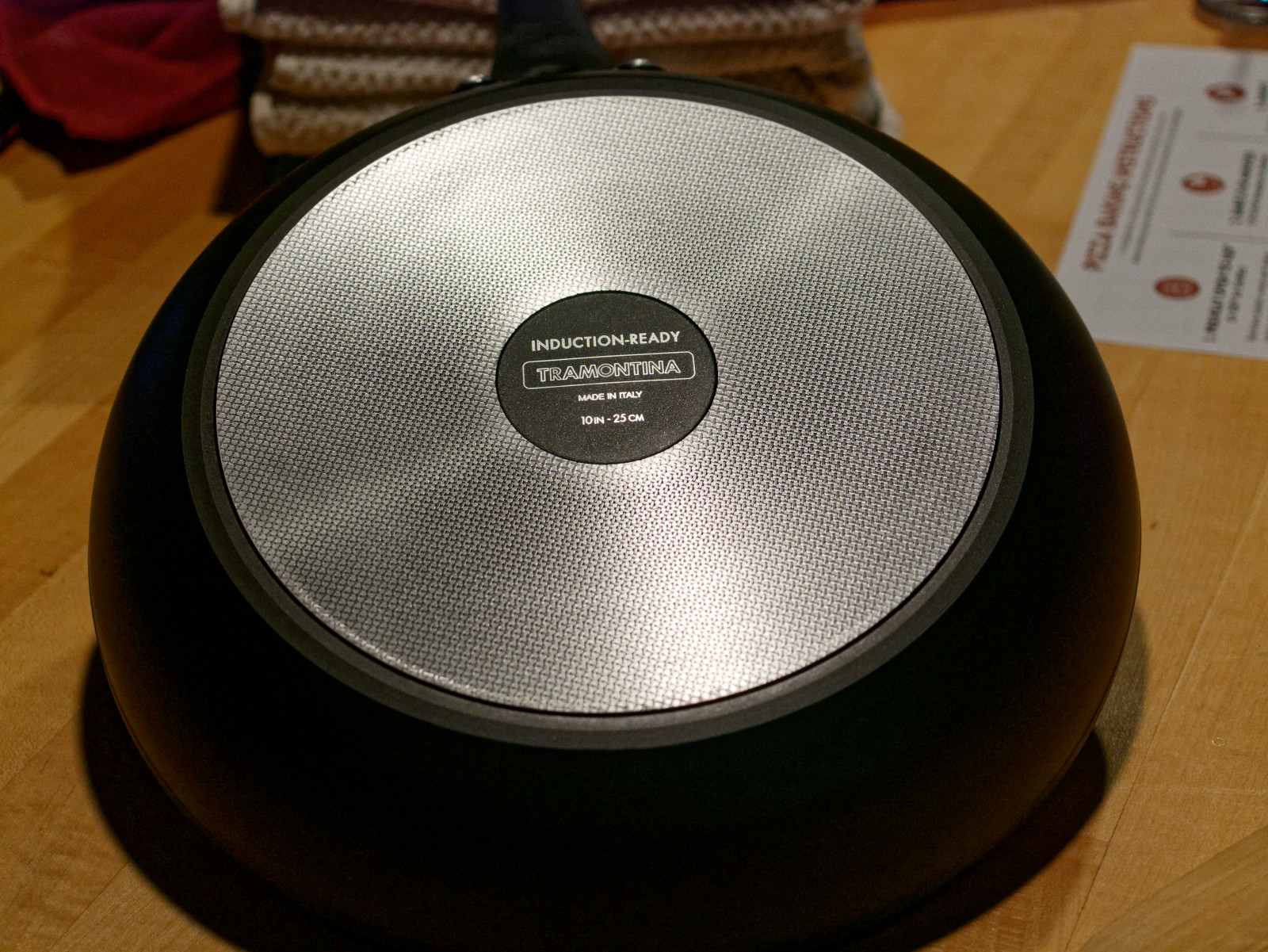Aluminum pans won't work with induction as aluminum is a great conductor of electricity. The way an induction stove heats a cooking vessel is that there is a wire coil that sits just beneath the burner surface. An alternating voltage is passed through the wire, causing electric current to flow through the wire. Any time a current is fed through a conductor, it produces a magnetic force. Alternately, any time a conductor passes through a magnetic field, it induces an electrical current. In an induction stove, the alternating voltage causes magnetic lines of force to expand, and collapse in relation to the strength of the electric current. This moving magnetic flux, as it is called, reacts with the metal cooking vessel, creating what is called eddy currents. It is a function of conductors that the better they conduct, the more efficient they are at allowing current to flow through them without transforming that electrical energy into heat. Metals such as iron and steel have a lot of resistance to electrical current flow, that is they are poor conductors. As eddy currents are induced in iron and steel vessels by the magnetic force, that resistance causes the transformation of electrical energy into heat. t
hat's why you can place your hand on an induction burner tuned on full blast, and not feel any heat. Your hand is not a conductor at all, and so the magnetic field does nothing to you.
Word of caution here, metal jewelry is made of conductive material, and so can get very hot, very fast, so it's best not to let them get close to an induction burner.
The take-away from all of this, pots and pans made from highly conductive metals such as copper, or aluminum won't generate heat. Insulators such as ceramics, and glass, are completely unaffected by induction, and so, won't get hot. Induction burners work with ferrous metals, i.e. metals that contain iron, like stainless steel, cast iron, high and carbon steel. A wok made from aluminum will work great over a flame, or a radiant heat source, but not on an induction burner.
I hope this was helpful, and not confusing.
Seeeeeeya; Chief longwind of the North

